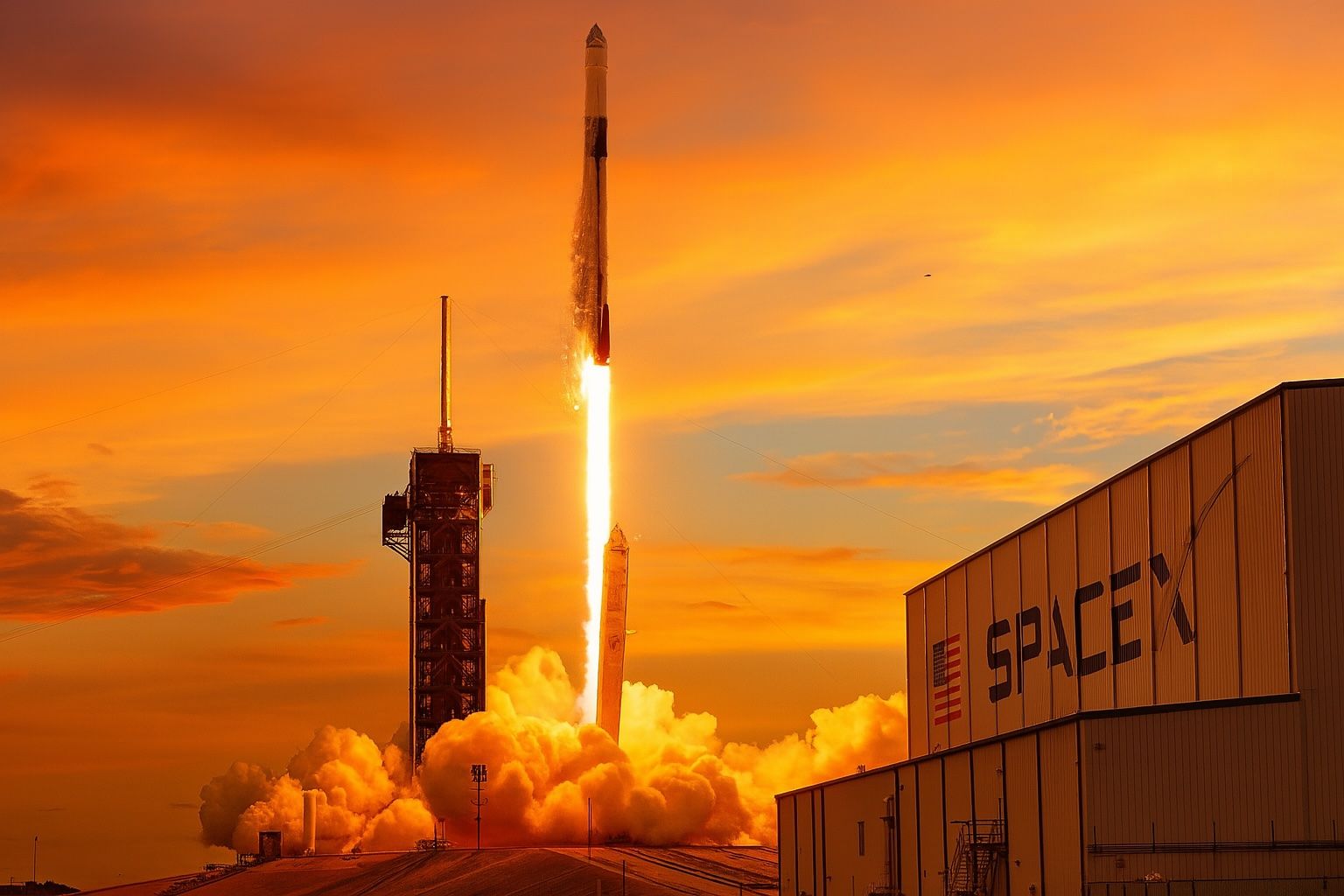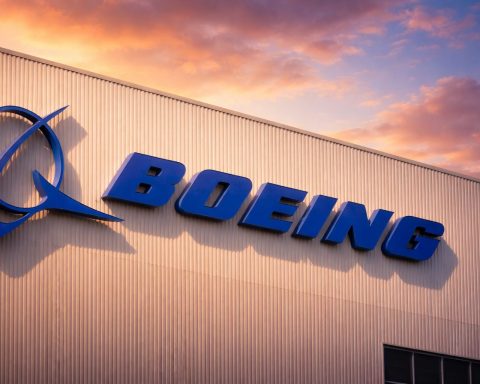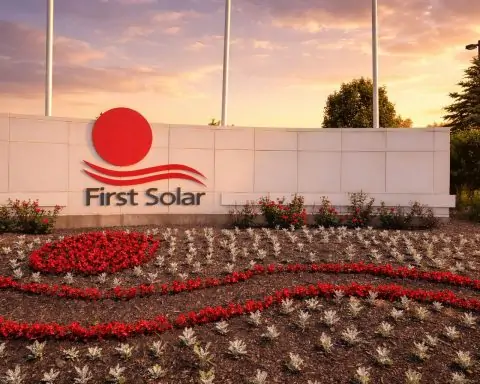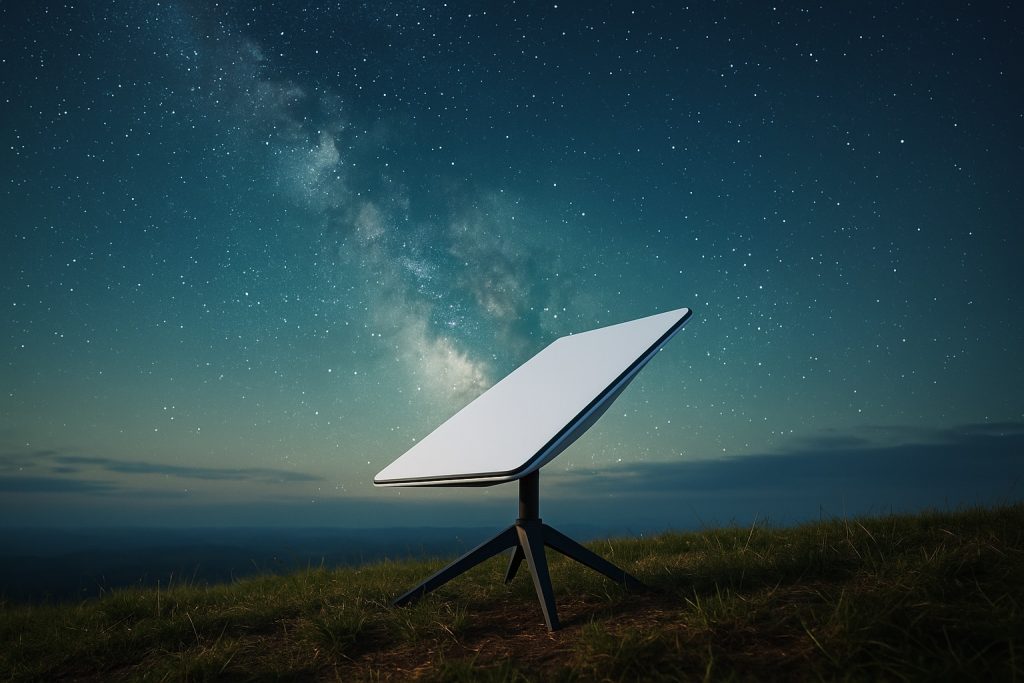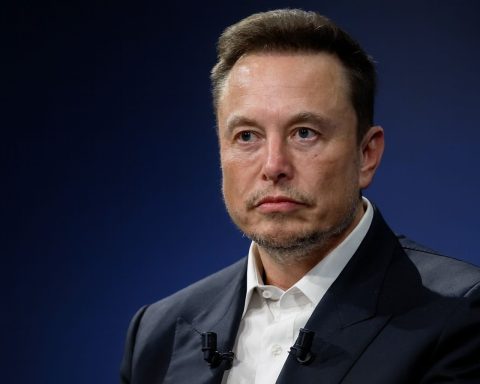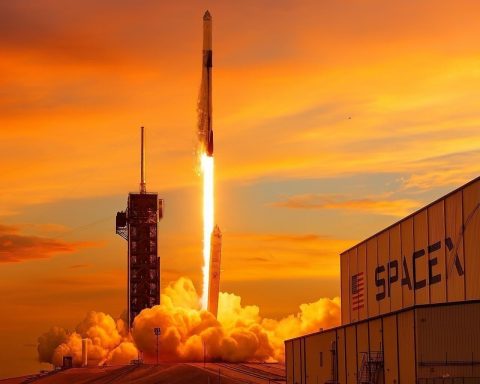- Falcon 9’s first flight occurred in June 2010; the two‑stage rocket is 70 m tall, 3.7 m in diameter, uses nine Merlin 1D engines on the first stage and one Merlin Vacuum on the second, delivers about 7,600 kN of thrust at liftoff, carries ~22.8 t to LEO, and its first stage (Block 5) is reusable.
- Falcon Heavy’s maiden flight took place in February 2018; at 70 m tall with a total span of 12.2 m, it uses three Falcon 9 cores, produces about 22,819 kN of thrust, can deliver ~63.8 t to LEO (expendable), and its side boosters are reusable.
- Starship’s first full-stack test flight occurred on April 20, 2023 (Ship 24 + Booster 7); the vehicle is about 120 m tall with a 9 m diameter, generates roughly 75,000 kN of thrust, is designed to deliver 100–150 t to LEO with full reusability, and uses 33 Raptors on the booster and 6 on the ship.
- On November 18, 2023 (Ship 25 + Booster 9), Starship achieved stage separation and an upper-stage ignition but disintegrated before reaching orbital velocity.
- In May 2025 the FAA approved SpaceX to ramp Starship launches to 25 flights per year from Starbase, signaling higher cadence for the vehicle.
- As of August 2025, Falcon 9 had 528 orbital missions with 525 successes and 2 failures, plus on‑pad explosions and a partial success, with the Block 5 version at ~99.78% reliability.
- Falcon Heavy had 11 flights through mid‑2025 with zero payload failures, and its side boosters have landed on multiple missions while the center core has been expended on some flights.
- On June 25, 2024, Falcon Heavy launched NASA’s Europa Clipper to Jupiter’s moon Europa, with side boosters landing and the center core expended, reportedly saving NASA around $2 billion.
- Blue Origin’s New Glenn had its maiden orbital flight on January 16, 2025, delivering a dummy “Blue Ring” payload, but the first‑stage booster did not recover.
- Europe’s Ariane 6 had its maiden flight on July 9, 2024, followed by a fully successful second flight on March 6, 2025 deploying the CSO‑3 satellite; the A64 can lift ~21.5 t to LEO and 11.5 t to GTO, with an estimated price around $100 million per launch, while the smaller A62 can lift ~10 t to LEO.
SpaceX has revolutionized spaceflight with three generations of rockets – the trusty Falcon 9, its beefy sibling Falcon Heavy, and the next-gen Starship super-rocket. Each vehicle pushes the envelope in reusability, power, and cost, reshaping the launch market and capturing public imagination. In this ultimate comparison, we’ll break down technical specs, launch costs, mission records, clients, and the latest 2025 updates for SpaceX’s trio, complete with expert insights and a look at upcoming rivals. Read on to find out which SpaceX rocket comes out on top – and how they’re collectively leaving competitors in the dust.
Technical Specifications at a Glance
To start, here’s a quick comparison of key specs for Falcon 9, Falcon Heavy, and Starship:
| Rocket | First Flight | Height | Diameter | Launch Mass | Engines (1st stage / 2nd stage) | Thrust at Liftoff | Max Payload to LEO | Fuel | Design Reusability |
|---|---|---|---|---|---|---|---|---|---|
| Falcon 9 | June 2010 | 70 m (229 ft) [1] | 3.7 m (12 ft) [2] | 549 t [3] | 9 Merlin 1D / 1 Merlin Vacuum [4] [5] | ~7,600 kN (sea-level) [6] | 22.8 t to LEO (expendable) [7] | LOX / RP-1 (kerosene) [8] [9] | First stage reusable (Block 5) [10] [11] |
| Falcon Heavy | Feb 2018 | 70 m (229 ft) [12] | 12.2 m (40 ft) total span [13] | 1,420 t [14] | 27 Merlin 1D / 1 Merlin Vacuum (3 Falcon 9 cores) [15] [16] | ~22,819 kN (3 cores total) | 63.8 t to LEO (expendable) [17] | LOX / RP-1 (kerosene) | 1st stage side boosters & sometimes center core reusable [18] [19] |
| Starship | April 2023 | 120 m (394 ft) [20] | 9 m (30 ft) [21] | ~5,000 t (est.) | 33 Raptor (booster) / 6 Raptor (ship) [22] [23] | ~75,000 kN (≈16.5 Mlbf) [24] [25] | 100–150 t to LEO (fully reusable) [26] [27] | LOX / CH<sub>4</sub> (methane) [28] [29] | Fully reusable (booster + ship) (in development) [30] [31] |
Falcon Heavy’s cores are 3.7 m each; 12.2 m is total width with three boosters attached. [32]
Starship’s first full-stack test flight occurred April 20, 2023 (not yet operational).
Thrust values are approximate; “LEO” = low Earth orbit; LOX = liquid oxygen propellant.
As the table shows, Falcon 9 is a medium-heavy lift two-stage rocket, Falcon Heavy essentially triples Falcon 9’s first stage for extra oomph, and Starship dwarfs them both as a fully-reusable behemoth. Key differences include engine types (Falcons use Merlin engines burning kerosene, whereas Starship’s Raptors use methane) and payload capacity – Starship is designed to haul over 100 tons to orbit, far beyond Falcon’s reach [33].
Reusability and Launch Cost
SpaceX’s hallmark is rocket reusability, enabling dramatically lower launch costs. All three vehicles prioritize reuse, but to varying degrees:
- Falcon 9 became the world’s first orbital-class booster to routinely land and refly its first stage. The latest Block 5 version can be reflown 10+ times with minimal refurbishment [34] [35]. This has slashed the advertised launch price to ~$67 million per flight (2022), from about $62 M before [36]. (For context, comparable expendable rockets often cost >$100 M). SpaceX even nudged the price to ~$70 M by 2024 amid high demand [37]. Internal costs per launch are reportedly much lower, thanks to reusing boosters and fairings.
- Falcon Heavy also features reusable boosters – its two side boosters are essentially Falcon 9 first stages that can fly back for landing, and sometimes the center core is recovered as well. Reusability depends on mission profile: for maximum payload, the core might be expended. The list price rose to about $97 million (from $90 M) for a Falcon Heavy launch [38], still a bargain per-kilogram compared to alternatives. By recovering at least the side boosters, SpaceX saves cost, though refurbishment of three cores adds complexity. Still, no other heavy-lift launcher in service offers any reuse in 2025.
- Starship takes reusability to the extreme – it is designed to be fully and rapidly reusable, both the Super Heavy first-stage booster and the Starship upper stage (spacecraft) [39]. The vision is to refly each piece within hours, more like an airplane than a traditional rocket. Elon Musk has stated Starship could eventually cut launch costs to a few million dollars or less, given economies of scale. Official pricing isn’t set (it’s still in testing), but Musk has hinted at <$10 million per flight in the future – astonishing for a vehicle expected to loft 100+ tons. In Musk’s words: “each launch…is about learning more and more about what’s needed to make life multiplanetary” by improving Starship [40]. In other words, short-term failures are acceptable if they lead to long-term cost and reliability gains.
Falcon Heavy’s two side boosters landing simultaneously after launching the Arabsat-6A mission in 2019 [41]. This dramatic dual landing demonstrated SpaceX’s reusable booster technology. Falcon Heavy recovers boosters to save cost (center core not shown here crashed into the ocean due to a landing issue on this mission). Reusability has made the Falcon family the “most statistically reliable rockets in history,” with over 100 successful booster landings in a row by 2023 [42] [43].
It’s worth noting that SpaceX’s aggressive reuse strategy was initially met with skepticism in the industry – but by mid-2020s, they proved the naysayers wrong. Falcon 9 boosters have flown as many as 29 missions each [44], dramatically amortizing hardware cost. Fairings (nose cones) are also routinely recovered from the ocean or via nets and reflown, with some halves reused 10+ times [45]. This approach gives SpaceX a major price advantage. As Ars Technica quipped, by 2025 SpaceX is “the safest, most reliable launch provider in the world” and still often cheaper than competitors [46]. Even NASA, which pays extra for certain mission assurance, has benefited – a Falcon 9 for a NASA crew mission is tens of millions cheaper than the older Space Shuttle per launch.
Performance and Reliability Record
Beyond specs on paper, how have these rockets actually performed? Here’s a look at their launch history and reliability:
- Falcon 9 is SpaceX’s workhorse and a reliability champ. As of August 2025, Falcon 9 (all versions) has flown 528 orbital missions [47] – 525 full successes and only 2 failures in flight (plus one on-pad explosion and one partial success) [48] [49]. That’s a 99%+ success rate overall, with the current Falcon 9 Block 5 achieving 99.78% reliability [50]. Notably, there have been no mission failures since 2016, a streak of over 500 consecutive successful launches [51] [52]. This puts Falcon 9 in a league of its own – by 2023 it had already become the most statistically reliable orbital rocket ever in terms of consecutive successes [53]. SpaceX’s cadence is equally impressive: they completed 96 Falcon launches in 2023 and a record 134 launches in 2024 (133 successful) [54], amounting to over half of all worldwide launches that year. In 2023 SpaceX even turned around two Falcon 9 launches just one hour apart on the same day [55]. Reuse has not degraded reliability; if anything, the iterative improvements have enhanced it. The first-stage landing success streak is >100 straight since Feb 2021 [56] [57]. A single booster (serial B1067) has flown 29 times – a far cry from the “one-and-done” rockets of the past [58]. All this explains why customers from NASA to commercial satellite firms trust Falcon 9 for critical missions.
- Falcon Heavy has a more modest flight count due to its niche role, but a perfect record so far. Debuting with a flashy test flight in Feb 2018 (launching Elon Musk’s Tesla Roadster toward Mars orbit), Falcon Heavy has flown 11 times through mid-2025 with zero payload failures [59]. Its missions have included commercial telecom satellites (e.g. Arabsat-6A), U.S. military payloads (e.g. Space Force missions USSF-44, -67), and NASA science probes (the Psyche asteroid mission launched in Oct 2023 on a Falcon Heavy [60], and the upcoming Europa Clipper mission is slated for Falcon Heavy as well). While all missions succeeded in reaching orbit, landings have been mixed: side boosters usually return intact (famously nailing side-by-side landings that look like synchronized ballet), but the center core has been lost on several flights due to the high-energy trajectories. For example, the center booster exploded on impact during the 2019 STP-2 mission and again on a 2023 mission when it missed the drone ship – however, these did not affect the primary missions, which were successful. SpaceX often forgoes center core recovery on demanding flights to reserve fuel for the mission. In terms of reliability, Falcon Heavy benefits from Falcon 9’s proven components and adds redundancy (it can complete some missions even if it loses an engine or booster). To date, customers like the Space Force have expressed confidence; as SpaceX’s Gwynne Shotwell put it, Falcon Heavy offers a combination of “exceptional reliability and performance” gleaned from Falcon 9’s heritage (she noted the cores have 30% more capacity than advertised, reserved for recovery margins). In short, Falcon Heavy hasn’t flown often, but when it has, it delivered.
- Starship is still deep in its flight-test campaign, so its “reliability” is a work in progress. Its first orbital-class test flight (Ship 24 + Booster 7) lifted off on April 20, 2023, and while it didn’t reach orbit, it did clear the pad and fly for ~4 minutes before being terminated [61] [62]. The giant vehicle caused a spectacle (and some pad damage), scattering debris when 33 Raptor engines roared to life. SpaceX treated it as an “experimental success” in that it gathered valuable data [63] – an approach encapsulated by the company’s statement: “With a test like this, success comes from what we learn.” [64] After addressing issues (like adding a massive steel water-cooled flame deflector under the pad and improving engine reliability), SpaceX tried again on Nov 18, 2023 (Ship 25 + Booster 9). This second test flight achieved stage separation and sent the upper-stage Starship to the edge of space, but the vehicle lost control before reaching orbital velocity and ultimately disintegrated high over the ocean [65] [66]. Notably, the upgraded pad survived intact and Booster 9 executed a flip maneuver intended for a water landing, demonstrating progress [67]. By this time SpaceX had implemented 63 corrective actions mandated by the FAA after the first test [68] [69], paving the way for more frequent flight attempts. Fast-forward to 2024–2025: SpaceX significantly picked up the testing pace. Starship’s third, fourth, and fifth flight tests occurred in 2024 (the company doesn’t publicize all details, but an FAA environmental report cited Starship’s “sixth test flight” taking place Nov 19, 2024 [70] [71]). By early 2025, Starship tests were happening nearly every 2–3 months, each time pushing a bit further. In January 2025, on Flight 7, SpaceX successfully caught the Super Heavy booster with the launch tower’s giant “chopstick” arms for the first time [72] [73] – a jaw-dropping feat of precision engineering. The Starship upper stage, however, was lost about 9 minutes into that flight (ascent anomalies led to automatic termination) [74]. Flight 8 in March 2025 repeated this pattern: the booster was caught intact again, and Starship flew higher and longer, even attempting to deploy dummy Starlink satellites, before several engines flamed out and the ship tumbled out of control [75] [76]. Each “failure” taught crucial lessons. Then came Flight 9 on May 27, 2025 – Starship reached space and nearly achieved orbital velocity before an apparent propellant leak caused loss of control; the ship reentered and broke up over the Indian Ocean [77] [78]. Despite falling short of full orbit, Elon Musk lauded Flight 9 for “improved performance” over previous tries and noted SpaceX now has a “wealth of data to analyze” [79] [80]. In a public talk days later, Musk struck an optimistic tone: “Progress is measured by the timeline to establishing a self-sustaining city on Mars,” he said, framing each Starship test as bringing that goal closer [81]. He revealed an upgraded “Starship Version 3” is planned to fly by end of 2025, featuring more height (124 m tall) and full rapid reusability for Mars trips [82] [83]. Musk even speculated SpaceX will “try to hit” the Mars 2026 launch window with uncrewed Starships (though he gave it only a “50/50 chance” of success) [84] [85]. It’s clear Starship’s reliability is not there yet (several big booms attest to that), but this is expected in the experimental phase. NASA, one of Starship’s biggest stakeholders (for the Artemis moon lander variant), remains supportive. After the Jan 2025 test, NASA Administrator Bill Nelson congratulated SpaceX on Starship’s progress, acknowledging that “spaceflight is not easy. It’s anything but routine. That’s why these tests are so important — each one bringing us closer on our path to the Moon and on to Mars through Artemis.” [86] NASA knows that Starship’s eventual success is key to landing astronauts on the Moon (the Artemis III mission, now targeting 2026, will use a Starship HLS to ferry crew to the lunar surface). In short, Falcon 9 is a proven workhorse with airline-like reliability, Falcon Heavy has achieved spotless mission success in fewer tries, and Starship is rapidly evolving through a series of spectacular trial runs. SpaceX’s willingness to “fly, fail, fix, and fly again” in public is the opposite of traditional aerospace caution, but it’s how they iterate toward reliability at breakneck speed.
SpaceX’s Starship lifts off on a test flight from Starbase, Texas. Starship is the largest and most powerful rocket ever built, standing 120 m tall and producing ~17 million pounds of thrust [87] [88]. As of 2025 it remains in development, with SpaceX methodically testing its enormous booster and spacecraft stages. Multiple Starship prototypes have flown, with partial successes and dramatic explosions that are part of the learning process. The ultimate goal is routine, fully-reusable flights to orbit, the Moon, and Mars.
Use Cases and Customers
Each SpaceX rocket targets somewhat different markets and missions, though there is overlap:
- Falcon 9 carries the bulk of SpaceX’s launches. It was designed as a “medium-to-heavy lift” launcher for satellites and spacecraft [89]. In practice, Falcon 9 handles everything from tiny CubeSats on rideshares to large commercial satellites, to NASA crew and cargo missions. A major portion of Falcon 9 flights are SpaceX’s own Starlink internet satellites – in fact, since 2020, Starlink deployments have dominated the manifest, accounting for a majority of Falcon launches [90]. Falcon 9 also regularly launches U.S. military payloads (GPS satellites, intelligence satellites, etc.), having broken ULA’s monopoly on U.S. defense launches a few years ago. NASA relies on Falcon 9 to send Cargo Dragon and Crew Dragon spacecraft to the International Space Station; since the retirement of the Space Shuttle, SpaceX has become a critical transport provider for NASA. Commercial telecom operators (e.g. SES, Inmarsat) have used Falcon 9 for geostationary satellites, attracted by its low cost – a trend that accelerated when Europe’s Ariane 6 got delayed and Russia’s Proton became unavailable (SpaceX picked up many of those customers). In short, Falcon 9 is the all-purpose workhorse serving NASA, DoD, and commercial needs. Its high launch cadence (weekly or more) and flexibility (it can launch polar orbits from California or eastward orbits from Florida) make it a go-to solution. As a reusable vehicle, it’s also popular for one-off science missions; e.g. NASA’s SWOT Earth science satellite and DART asteroid mission launched on Falcon 9. With SpaceX aiming for 150 Falcon launches in 2025 [91], the rocket shows no sign of slowing down – its customer base spans government and private sectors worldwide.
- Falcon Heavy is utilized for missions needing extra performance beyond Falcon 9’s capability. Think of heavy satellites, deep space probes, or multiple payloads that a single Falcon 9 can’t handle. The U.S. military has been a key Falcon Heavy customer, using it to loft large classified satellites directly to high orbits. For example, the USSF-44 mission in 2022 required sending payloads to geosynchronous orbit – a job only Falcon Heavy (aside from the ultra-expensive Delta IV Heavy) could do at the time. NASA is also leveraging Falcon Heavy: it will launch Europa Clipper (a flagship Jupiter moon mission in 2024) and launched the Psyche asteroid mission in 2023 – both were originally candidates for the SLS rocket, but SpaceX offered a far cheaper alternative. Falcon Heavy’s ability to send >16 tons toward Mars [92] opens possibilities for interplanetary missions too (NASA’s Psyche probe and a smallsat ride-along to Mars were launched together by Falcon Heavy in 2023). Additionally, Falcon Heavy can deliver large modules to the Moon or cislunar space; for instance, NASA awarded SpaceX a contract to launch the Gateway space station modules (PPE and HALO) on Falcon Heavy. Commercially, Falcon Heavy has flown satellites like ViaSat-3 and Jupiter-3 (huge communications satellites ~6–9 tons each) [93]. However, demand is limited – many satellites are designed around ~5-ton class launchers – so Falcon Heavy flies only a few times a year. Its niche is essentially “Falcon 9, but with more muscle” for those who need it. The customer list thus far includes NASA, the US Space Force, Arabsat, ViaSat, Inmarsat (with Astranis), and coming up, potentially human spaceflight: the private dearMoon project, funded by billionaire Yusaku Maezawa, plans to send artists around the Moon in a Crew Starship launched by a Falcon Heavy (as an interim solution before Starship is crew-rated). In summary, Falcon Heavy serves high-end needs for heavy or high-energy missions, filling a gap until Starship becomes operational.
- Starship, once operational, is intended to surpass both Falcon 9 and Heavy and enable new missions not possible before. Its use cases are incredibly broad:
- Starlink Deployment: SpaceX plans to eventually shift Starlink launches to Starship, since it could launch hundreds of satellites at once, reducing per-satellite cost. The next-gen Starlink V2 satellites are larger and ideally suited for Starship’s huge payload bay [94].
- Human Spaceflight: Starship is being developed to carry crew to orbit, the Moon, and Mars. SpaceX is working on making Starship meet NASA human-rating standards (40% safety margin on structures, redundant systems, etc. [95]). NASA’s Artemis program is already investing in Starship – SpaceX won the contract to use a modified Starship as the Human Landing System (HLS) for Artemis III and a follow-on mission [96]. In parallel, private missions like dearMoon intend to fly people on Starship for a lunar flyaround. Elon Musk’s ultimate goal is to transport “hundreds of thousands, if not millions, of people to Mars” via fleets of Starships [97] – hence the enormous capacity. While Mars colonization is distant, Starship could enable space tourism in Earth orbit or even point-to-point hypersonic travel (using Starship to hop between cities in minutes, an idea SpaceX has floated for the long term).
- Cargo and Space Infrastructure: With up to 150 t to LEO in reusable mode (or 250 t if expended) [98], Starship can launch large space telescopes, modules for space stations, or even entire space station segments in one go. For example, a single Starship could deploy Starlab, a private space station that Voyager Space and Airbus plan for the late 2020s [99] [100]. Starship could also serve as a tanker, refueling other Starships in orbit – a game-changer for deep space missions (with orbital refueling, Starship can deliver 100+ tons to the Moon or Mars [101] [102]). It might also deliver infrastructure: SpaceX has mused about using Starship to ferry construction materials for lunar or Martian bases.
- Military and Other Uses: The US military is studying Starship for rapid global cargo delivery – essentially using it as a space freighter to send supplies across Earth in under an hour. Such concepts (Project Starship Cargo) show how a fully reusable heavy rocket opens new paradigms. Starship could also launch huge batches of small satellites in one mission, potentially servicing entire constellations in a single launch.
In essence, Starship’s customer base will likely include NASA (Moon missions), SpaceX’s internal Starlink program, other space agencies (for large science missions or exploration architectures), and potentially the US Department of Defense if rapid launch logistics become reality. Commercial satellite operators are cautiously optimistic too – Starship could drastically lower the cost per kilogram, but it needs to prove reliability. Notably, SpaceX’s own ambitions drive Starship: it’s the linchpin to Musk’s Mars dreams. Each test brings it closer to serving those use cases. As SpaceX likes to say, “Starship enables new missions including space telescopes even larger than James Webb” [103] – things that were simply infeasible due to launch constraints before.
Recent News and 2025 Developments
The past two years have been intensely eventful for SpaceX’s rockets, with milestone after milestone:
- Starship Orbital Tests: After the first Starship flight test in April 2023 ended in a mid-air self-destruct, SpaceX regrouped quickly. By late 2023, they had completed a thorough FAA-supervised investigation and implemented dozens of fixes [104] [105]. The FAA granted a modified launch license in Nov 2023 [106], allowing the next launch which took place Nov 18. That second flight demonstrated successful stage separation via a hot-staging maneuver (igniting the upper stage while still attached to push them apart) [107] [108] and proved the new pad upgrades. Although Starship didn’t reach orbit, Elon Musk declared it a “truly awesome” step forward, noting the pad wasn’t damaged [109] and invaluable data was obtained on engine-out handling and stage dynamics. The FAA initially halted flights pending another mishap review, but by early 2024 SpaceX had clearance to resume testing. In January and March 2025 (Flights 7 & 8), they achieved the first ever tower catches of a descending rocket booster – a key part of making turnaround faster (no need to transport boosters from a drone ship) [110] [111]. Despite losing the Starship upper stage on those flights, SpaceX showed they can reliably recover the Super Heavy booster, which is itself an 1,800-ton, 69 m tall stage. Each test’s lessons have been rapidly applied to the next prototype. By mid-2025, SpaceX had refined Starship’s engines (the Raptor engines were upgraded to prevent the “fuel-rich flameout” issue that caused Flight 8’s failure [112] [113]) and improved the flight software. Flight 9 in May 2025 marked the first time a Starship test vehicle reached space (exceeding 100 km altitude) and nearly completed an orbit [114]. Though it ultimately failed to circularize, SpaceX celebrated the progress – the vehicle’s performance was much closer to orbital requirements, and debris fell in a safe area. SpaceX is expected to attempt Flight 10 by late 2025 with further upgrades. Indeed, the FAA in May 2025 approved SpaceX to ramp up Starship launches to 25 flights per year from the Starbase site [115] [116], a huge increase from the previous cap of 5. This environmental go-ahead suggests confidence that SpaceX can manage the impacts of frequent Starship launches. It also signals SpaceX’s intent to move quickly toward an operational Starship.
- Falcon 9 Cadence and Records: SpaceX has continued to push the envelope with Falcon 9’s reuse and launch frequency. In 2023 they narrowly missed a goal of 100 launches (achieving 96) [117], but in 2024 they shattered all records with 134 Falcon-family launches [118]. To put that in perspective, SpaceX alone launched more orbit missions in 2024 than the entire world did annually in most of the 2010s. They routinely perform multiple launches in a single day from different pads. SpaceX’s fleet of reusable boosters has grown, and refurbishment times have shrunk – one booster (B1062) completed two orbital launches just 35 days apart in 2023, and SpaceX aimed to cut that to under 24 days in 2024. By mid-2025, SpaceX had conducted the 500th Falcon booster flight (including Falcon 9 and Heavy) [119]. On May 17, 2024, a Falcon 9 booster flew for the 21st time, setting a new reuse record [120]. (By comparison, the Space Shuttle orbiters maxed out at 39 missions over 30 years, and those involved far more refurbishment.) As of 2025, multiple Falcon 9 boosters have 15+ flights, and at least two have exceeded 20 flights [121]. SpaceX has been systematically increasing the certified life of boosters as they prove themselves. NASA has now flown astronauts on reused Falcon 9 rockets and reused Dragon capsules multiple times, a strong vote of confidence in reuse reliability. One can truly say Falcon 9 has made rocket landings and re-flights routine, to the point they barely make headlines now. SpaceX also notched its 200th consecutive successful Falcon launch without failure, an unprecedented streak in orbital rocketry [122] [123].
- Falcon Heavy Returns to the Moon: In 2022–2024, after a 3-year hiatus, Falcon Heavy roared back to life. Notably, on June 25, 2024, it launched NASA’s Europa Clipper spacecraft (destined for Jupiter’s moon Europa). This was a critical science mission originally planned for the SLS rocket, but SpaceX’s solution saved NASA around $2 billion. The launch went flawlessly, and Falcon Heavy’s side boosters touched down perfectly back at Cape Canaveral [124] (the center core was expended to give Clipper extra performance). NASA officials praised SpaceX for the timely launch amid tight planetary alignment constraints. Earlier, in October 2023, Falcon Heavy launched NASA’s Psyche probe to a metal asteroid – another success, though the side boosters landed on drone ships rather than on land due to that mission’s profile. The year 2024 also saw a Falcon Heavy launch in January delivering two Space Force communications satellites (the USSF-67 mission) and in July launching EchoStar Jupiter-3, one of the largest commercial comms satellites ever built (~9.2 ton). By mid-2025, Falcon Heavy was being prepared for NASA’s Gateway modules launch and possibly Artemis support missions. The rocket’s unique capability to send heavy payloads directly to the Moon (with some hardware modifications) makes it a valuable tool until Starship fully takes over.
- Regulatory and Infrastructure Updates: SpaceX’s relentless launch rate hasn’t always been smooth sailing with regulators. The April 2023 Starship launch scattered debris over sensitive habitats, prompting concerns from the Fish and Wildlife Service and FAA [125] [126]. SpaceX worked closely with agencies, and by late 2023 implemented environmental mitigations (e.g. a water deluge to protect ground, timing launches to avoid wildlife nesting seasons). The FAA’s May 2025 approval of 25 Starship launches/year came with a Finding of No Significant Impact after studies [127] [128] – a big win for SpaceX’s plans. Meanwhile, at Kennedy Space Center in Florida, SpaceX is building a second Starship launch tower at LC-39A (right alongside the Falcon 9 pad). This will eventually allow Starship launches from Florida for higher-inclination missions and to support NASA crewed flights. In Texas, SpaceX broke ground on a Starship factory and additional pads to handle the cadence. On the Falcon side, SpaceX in 2023 introduced “hot-staging” (firing second-stage engine a moment before first-stage separation) on a Falcon 9 for the first time [129], an experiment to squeeze extra performance – this is interestingly a technique taken from Soviet-era rockets, showing SpaceX isn’t afraid to innovate even on Falcon late in its life. Also, SpaceX started experimenting with one-hour launch recycling (resetting a pad for launch quickly after an abort) – in Sept 2023 a Falcon 9 launch was recycled in T–0 and successfully launched an hour later, highlighting operational efficiency.
- Expert and Public Reactions: The world has been watching SpaceX’s strides with a mix of admiration and concern. After Starship’s explosive first flight, some environmental groups sued the FAA, citing insufficient review. But courts have allowed test launches to proceed as analyses continue, given the FAA’s corrective actions requirement. Many space experts have applauded SpaceX’s transparency in failure. For instance, renowned aerospace engineer Robert Zubrin said Starship’s rapid iterative approach “is the way we’ll get to Mars – not by being timid”. NASA’s Bill Nelson (as quoted above) and associate administrator Jim Free have repeatedly expressed confidence that SpaceX will solve Starship’s issues in time for Artemis III, but they’re also keeping backup plans (Artemis III’s date was recently slipped from 2025 to 2026 largely due to Starship’s delays [130]). In the commercial sector, SpaceX’s dominance is clear – in 2023 they had about 80% of the global commercial launch market by some estimates. Competitors like Arianespace and ULA have been scrambling to field new rockets (Ariane 6, Vulcan) to compete on cost. Tory Bruno, CEO of ULA, acknowledged that SpaceX’s reuse has upended the industry’s economics, stating ULA’s new Vulcan is “designed to compete with Falcon 9 on price” [131] (though Vulcan is not fully reusable). As for Elon Musk, he remains the chief evangelist for Starship – in May 2025 he gave a 42-minute presentation updating progress [132] and even brought a Starship prototype to a conference as backdrop. Musk’s passionate quotes (like “Let’s get it done!” regarding building a city on Mars [133]) keep the spotlight on SpaceX’s long game.
All in all, 2024–2025 have been banner years for SpaceX’s rockets: Falcon 9 is launching more than ever and hitting reuse milestones that once seemed sci-fi; Falcon Heavy is executing important missions with flair; and Starship is rapidly maturing through bold testing. SpaceX’s ability to integrate lessons learned and scale up operations is unprecedented in spaceflight history. As SpaceNews noted in 2025, “SpaceX aims for record-breaking 170 orbital launches in 2025” [134] – an ambitious target that underscores their momentum. The big question now is: How are others responding, and can they catch up?
The Competition: New Glenn, Vulcan, Ariane 6 and More
SpaceX’s advances have spurred a new generation of heavy-lift launchers from other companies and nations. Here’s how Falcon and Starship stack up against upcoming rivals in 2025:
- Blue Origin’s New Glenn: Jeff Bezos’ space company, Blue Origin, developed New Glenn as a partially reusable heavy-lift rocket to compete with Falcon Heavy (and eventually Starship). New Glenn is a two-stage rocket with a huge 7 m diameter and 98 m height [135], powered by 7 BE-4 methane engines on the booster. After years of development, New Glenn finally reached orbit on its maiden launch on Jan 16, 2025 [136] [137]. The rocket successfully delivered its demo payload (a dummy “Blue Ring” orbital tug) to the intended orbit on that first try – a notable achievement (even SpaceX failed on its first Falcon 1 launches back in the day). However, New Glenn failed to recover its first stage on the maiden flight; the booster, whimsically named “So You’re Telling Me There’s a Chance,” suffered a problem and was lost during descent [138]. Blue Origin’s CEO Dave Limp said “landing the booster on the first try was ambitious… we’ll learn a lot from today and try again on our next launch” [139]. New Glenn’s first stage is intended to land on an ocean-going platform, much like Falcon 9’s method, and Blue Origin is aiming for at least 25 reuses out of each booster [140]. In terms of capacity, New Glenn can lift ~45 tons to LEO and 13 tons to GTO when the booster is reused [141] – roughly one-third the payload of Starship, since Starship’s fully reusable LEO capacity is 100+ tons [142]. New Glenn’s upper stage is expendable (LOX/LH2 with 2 BE-3U engines). Blue Origin has already lined up major customers: notably Amazon’s Project Kuiper (Bezos’s own satellite constellation) will use New Glenn for many launches, and NASA awarded New Glenn a contract to launch a Mars mission (the ESCAPADE probes in 2025) [143] [144] for just ~$20 million – an extremely low price that likely reflects New Glenn’s competitive pricing or promotional rate. New Glenn is also slated to launch Blue Origin’s Blue Moon lunar lander for NASA’s Artemis program later in the decade (Blue Origin won a NASA contract for a crewed lander, in parallel to SpaceX’s Starship HLS). Overall, New Glenn appears to slot in between Falcon Heavy and Starship: it’s bigger than Falcon Heavy and uses next-gen engines, but until Blue demonstrates booster reuse and full operational cadence, SpaceX still has the edge. Blue Origin’s advantage might be a larger payload fairing (7 m width, good for bulky cargo like space station modules) and potentially a smoother ride for sensitive payloads (due to hydrogen upper stage). However, given SpaceX’s head start, New Glenn is playing catch-up. Still, Blue Origin’s first launch success in 2025 shows a new competitor has finally arrived. We can expect an Aerospace rivalry between Musk’s and Bezos’s companies as New Glenn ramps up.
- ULA’s Vulcan Centaur: United Launch Alliance – the Boeing/Lockheed joint venture – developed Vulcan to replace its venerable Atlas V and Delta IV rockets, largely prompted by the need to compete with Falcon 9 on cost and end reliance on Russian engines [145]. Vulcan is a methane-fueled rocket with two BE-4 engines (ironically from Blue Origin) and can add up to 6 solid boosters for extra thrust [146]. It’s a single-core design about 66 m tall, similar in size to Atlas V but more capable. After some delays, Vulcan had its debut launch on January 8, 2024, carrying a private moon lander (Astrobotic’s Peregrine) and some secondary payloads [147] [148]. The launch was nearly perfect – the Vulcan rocket did its job and inserted the payload on the proper trajectory [149]. Unfortunately, the Peregrine lander later failed its lunar landing, but that was not Vulcan’s fault. Vulcan’s second flight in October 2024 was a high-profile test for the US Space Force, carrying a payload to a challenging orbit; it encountered an anomaly where one of its solid booster nozzles broke off mid-flight, causing slightly asymmetric thrust [150]. Impressively, Vulcan still delivered the payload to an acceptable orbit despite the booster issue – demonstrating robustness. ULA and the Space Force conducted a 5-month review, and by March 2025 Vulcan was certified for national security missions [151] [152]. The first operational Vulcan launch for the Space Force (USSF-106) took place August 12, 2025, and was a success [153]. So by late 2025, Vulcan is online. In terms of capability, a fully loaded Vulcan (with 6 solids) can lift 27.2 tons to LEO [154] – almost matching the old Delta IV Heavy (28.8 t) and about on par with Falcon Heavy’s recoverable capacity (around 30 t). To GTO it can do ~14 t with solids. Cost-wise, ULA hasn’t published official prices, but aims for mid-$90 million range per launch, significantly cheaper than Atlas V (which was $150–$200 M). Still, Falcon 9 undercuts Vulcan for many missions, so ULA is focusing on government customers who value its track record and on-time delivery. Vulcan’s clients will include the US Space Force (already a dozen missions are manifested), Amazon’s Kuiper (ULA got a big contract to launch Kuiper satellites on Vulcan as well), and potentially human spaceflight – ULA’s plan was to launch Sierra Space’s Dream Chaser spaceplane on Vulcan to carry cargo (and possibly crew) to ISS. That mission has slipped to 2024/2025, but is on the docket. ULA also advertises Vulcan for interplanetary science missions. However, Vulcan is only partially reusable on paper – ULA had a concept to recover the BE-4 engines via mid-air capture (SMART reuse), but it’s not being implemented initially. This means every Vulcan launch still expends a multi-million-dollar booster and upper stage. So while Vulcan is modern and more cost-effective than its predecessors, SpaceX’s fully reusable Starship threatens to eclipse it quickly on capability and cost per kg. ULA’s Tory Bruno has hinted Vulcan could evolve, but time will tell. In summary, Vulcan Centaur secures ULA’s position in the medium-heavy segment with reliability first, but it will likely serve a more limited market (mainly defense and a few commercial contracts) given SpaceX’s aggressive pricing.
- Europe’s Ariane 6: The European Space Agency, with ArianeGroup and Arianespace, developed Ariane 6 as the next-gen launcher after Ariane 5. It’s an expendable two-stage rocket with either 2 or 4 solid boosters (the A62 and A64 variants) [155]. Ariane 6 aims to cut cost per launch roughly in half compared to Ariane 5, but it still lacks any reusability. After significant delays, Ariane 6 finally had its maiden flight on 9 July 2024 [156]. That first mission partially succeeded – the rocket reached orbit, but the upper stage malfunctioned on the final step (it failed to complete a deorbit burn) [157] [158]. The primary payload was delivered, but because the stage couldn’t deorbit, it was considered a “partial failure” [159]. European engineers fixed the issue, and the second Ariane 6 launch on 6 March 2025 was fully successful, deploying the French CSO-3 military satellite to orbit [160] [161]. By August 2025, Ariane 6 had flown three times (2 successes, 1 partial) [162]. The rocket is now entering service, with Arianespace planning up to 5 Ariane 6 launches in 2025 (they have a backlog including Galileo navigation satellites and commercial payloads) [163]. Ariane 6’s specs: the Ariane 64 (with 4 boosters) can loft ~21.5 t to LEO or 11.5 t to GTO [164] [165] – comparable to Falcon 9’s expendable performance, but less than Falcon Heavy. The Ariane 62 (2 boosters) handles smaller missions (10 t to LEO). Ariane 6’s cost per launch is estimated around $100 million for A64, $75 M for A62, which is a reduction from Ariane 5’s ~$170 M. However, it’s still pricier than Falcon 9’s ~$70 M and cannot match SpaceX’s rideshare pricing for small sats. Europe intentionally prioritized independent access to space over engaging in a price war – as officials have said, Ariane 6 provides Europe a guaranteed way to orbit for its missions, even if it’s not cheapest [166]. There has been criticism though: the rocket “failed to meet” its cost-halving target and faces a “lack of reusability versus competitors” like Falcon 9 [167]. ESA is already studying reusable concepts for post-2030, but Ariane 6 will operate in the interim. Its customers will be European institutions (Galileo nav sats, ESA science probes like Juice in 2023 was last Ariane 5; future ones will use Ariane 6), some commercial operators that prefer European launch (if they can tolerate the price or get subsidies), and potentially human-rated versions for crew capsules (though none are planned currently). One immediate challenge: Ariane 6 is entering service just as SpaceX’s Starship is looming. If Starship succeeds, it could undercut Ariane 6 on price/ton by a wide margin. Europe might then accelerate its reusable rocket plans. For now, Ariane 6 is a capable rocket but arguably one generation behind in innovation, as it’s fully expendable. Its selling point is reliability (Ariane 5 had a 25-year stellar record, which Ariane 6 hopes to continue) and a big fairing (5.4 m diameter, same as Ariane 5, suitable for large satellites or dual-payload launches). How it competes will depend on whether SpaceX leaves any market slice where high reliability but higher cost is acceptable.
- Others: There are a few other heavy launch systems in development worth noting:
- NASA’s Space Launch System (SLS): While not commercial, the SLS is a super-heavy rocket (carries 95 t to LEO in Block 1) used for NASA’s Artemis moon program. It launched successfully in Nov 2022 (Artemis I) and is slated to launch Artemis II (crewed Moon flyaround) in late 2025. SLS is extremely expensive (estimated ~$4 billion per launch) and not reusable, so it’s not really a competitor to SpaceX’s commercial services, but it’s part of the landscape. NASA is actually leveraging SpaceX to supplement SLS (with Starship as the lander and possibly to deliver large elements to lunar orbit). There’s speculation that if Starship becomes operational and reliable, NASA might opt for it over SLS for many purposes due to cost.
- China’s Long March 9 and others: China is developing a super-heavy rocket (Long March 9) aiming for similar lift to Starship/SLS. However, they recently redesigned it to pursue partial reusability and it likely won’t fly until late 2020s. In the meantime, China’s Long March 5 and 7 rockets are more akin to Falcon 9 class (25 t to LEO for LM5). No Chinese rocket currently challenges Falcon Heavy or Starship capacity, but China is accelerating its work after seeing SpaceX’s progress.
- Blue Origin’s New Shepard (suborbital) and smaller rockets aren’t directly in this league, so we skip them. Likewise, Rocket Lab’s upcoming Neutron rocket (planned ~2024 first flight, ~8 t to LEO, partially reusable) competes with Falcon 9 on the small end, not with Heavy/Starship.
- India’s LVM3 (GSLV Mk III) is a 4 t to GTO vehicle (roughly 10 t to LEO) that flew the Chandrayaan-3 moon mission in 2023. It’s an Ariane 5 class rocket, but not in the heavy-lift category of Falcon Heavy. India has no reusable rocket yet, but is considering one.
- Japan’s H3 rocket debuted in 2023 but failed on its first flight; it’s targeting ~6.5 t GTO (~14 t LEO) at lower cost. Again, a competitor to Falcon 9, not Heavy/Starship.
In summary, SpaceX’s competition is heating up in the heavy launch arena, but they largely lag in operational experience or reuse. New Glenn had a great orbital debut but must nail reuse. Vulcan is flying but not reusable (and had a hiccup already). Ariane 6 is flying but costlier and expendable. Starship, if it reaches its potential in the next couple of years, could render all these rockets (and even SpaceX’s own Falcon Heavy) obsolete by offering magnitude-cheaper transport for huge payloads. It’s telling that Blue Origin and ULA chose methane fuel and other technologies – a tacit acknowledgment that SpaceX’s approach is the future. As of 2025, SpaceX still holds the advantage: Falcon 9/Heavy dominate the market now, and Starship is on the verge of a breakthrough. But the race is on – and for customers and space exploration advocates, competition is a good thing. It means more innovation and potentially lower costs and more launches globally.
The Road Ahead
As we stand in 2025, SpaceX’s Falcon 9, Falcon Heavy, and Starship represent a triumvirate of game-changing launch vehicles. Falcon 9 has already proven that rapid reusability drastically lowers cost and increases access to space. Falcon Heavy has shown how to push the boundaries of payload delivery by building on that reusable architecture. And Starship is poised to take the baton and sprint into a future where massive payloads and human crews can be flown to the Moon, Mars, and beyond routinely and affordably.
SpaceX’s rockets have also reshaped public expectations – who would have thought a decade ago that landing rockets would become a spectator sport, or that we’d seriously be talking about sending dozens of ships to Mars? The phrase “SpaceX effect” is often used to describe how the company’s breakthroughs forced competitors, allies, and regulators to adapt quickly. For example, Europe’s next next-gen launcher designs now incorporate reusability explicitly, and even traditionally conservative organizations like the U.S. Space Force are signing contracts with SpaceX for record-setting missions (in 2022, SpaceX launched a GPS satellite for the Space Force for half the cost ULA charged, thanks to reusable Falcon 9) [168] [169].
Looking forward, here are some developments to watch:
- Starship Orbital Flights: The next year or two will be critical for Starship. If SpaceX can reach orbit and start demonstrating reliable reuse of the full system, it will be a paradigm shift. Musk’s timeline (though historically optimistic) suggests Starship could be operational before 2027 for satellite launches and even a crewed lunar landing for NASA in 2026 or 2027. Each test brings it closer, and SpaceX is known for accelerating once a technology matures.
- Falcon Fleet Phase-out: Elon Musk has stated that once Starship is flying regularly, Falcon 9 and Falcon Heavy will be retired. SpaceX would transition entirely to Starship for all missions (including Starlink). This could happen in the late 2020s. Until then, expect Falcon 9 to remain the reliable workhorse – it will likely break more records (30 reuses on one booster? 200 launches in a year?) if Starship’s ramp-up takes time.
- Launch Market Dynamics: With new rockets coming online globally, prices for basic launch services may drop further. SpaceX might respond by offering even larger rideshare missions on Starship (imagine hundreds of smallsats to orbit in one go for ultra-cheap rates). They have already disrupted the industry with $1 million for 200 kg rideshare pricing on Falcon 9 [170]; Starship could drive this down an order of magnitude, enabling startups, universities, and developing nations to get more payloads to orbit.
- Human Missions: If Starship succeeds, SpaceX plans to use it for the first crewed Mars missions in the late 2020s (an ambitious goal Musk gives about “50/50” odds for the 2026 window [171]). Even nearer, the dearMoon tourist flight (a loop around the Moon with artists) could happen in the next couple years on Starship if tests go well. And NASA’s Artemis III and IV missions are banking on Starship to land astronauts on the Moon. By 2025’s end, we should see significant progress on the crew-rated variant of Starship (e.g. successful in-orbit refueling tests, life support systems, etc.).
- Other Super-Heavies: Blue Origin will be pushing to recover and reuse New Glenn boosters by its 2nd or 3rd flight, aiming to hit a cadence of several launches a year. ULA’s Vulcan will be fully integrated into national security launch schedules, possibly giving SpaceX some competition for Pentagon missions. Internationally, we might see China test a reusable methalox rocket by 2026 (they’re working on one called Long March 8R and a SpaceX-like “Gridfin” booster recovery on Long March 9 by 2030). Europe might accelerate a reusable booster demo (the Themis program or Rocket Factory Augsburg’s micro-launcher).
- Space Infrastructure Enabled: With Starship’s giant capacity, entirely new projects become realistic – e.g. constructing a permanent Moon base by ferrying tens of tons of equipment each launch, or building a 100-meter space telescope assembled from Starship-delivered segments that could search for life on exoplanets. NASA and space agencies are already studying how Starship’s cargo volume and lift could transform space architecture. By the late 2020s, we could witness a building spree in orbit and on the Moon facilitated by these heavy lifters.
Finally, in this Falcon vs Heavy vs Starship showdown, who “wins”? The answer is that each rocket carved out its legacy: Falcon 9 undeniably “rules” the 2010s–2020s as the most flown and reliable orbital launcher of its time [172] [173], achieving feats (like >100 reuse landings in a row [174]) many thought impossible. Falcon Heavy proved complex multi-core reuse is feasible and gave us some of the most iconic space images (dual booster landings) while delivering critical missions [175]. And Starship – if it fulfills even a portion of its promise – will usher in a new era of space exploration, one where sending 100 tons to orbit is no big deal and missions that were unthinkable (Mars colonization, anyone?) are on the table. As Elon Musk put it, “Starship will be able to take, ultimately, hundreds of thousands of people to Mars. All right, let’s get it done!” [176] [177].
In the end, SpaceX’s trio of rockets work in concert: Falcon 9 opened the low-cost, reusable door; Falcon Heavy broadened it; and Starship is set to blow it off its hinges. The rest of the industry is racing to keep up, which can only mean exciting things ahead for humanity’s ventures beyond Earth. SpaceX has undeniably raised the bar – and the sky is no longer the limit.
Sources:
- SpaceX Falcon 9 and Heavy specifications and pricing [178] [179]; SpaceX Starship parameters [180] [181]; Falcon reusability and reliability statistics [182] [183] [184]; Launch cadence records [185].
- SpaceX launch updates and expert commentary: Space.com, SpaceNews, Reuters reports on Starship test flights [186] [187]; FAA and NASA statements [188] [189]; Elon Musk interviews [190] [191].
- Competitive launch systems: Blue Origin press release on New Glenn orbit flight [192] [193]; ULA Vulcan development and performance (Wikipedia/SpaceNews) [194] [195]; ESA announcements on Ariane 6 launches [196] [197]; Comparative analysis from NewSpace Economy [198] [199].
References
1. www.wevolver.com, 2. www.wevolver.com, 3. www.wevolver.com, 4. www.wevolver.com, 5. www.wevolver.com, 6. www.wevolver.com, 7. www.wevolver.com, 8. www.wevolver.com, 9. www.wevolver.com, 10. www.teslarati.com, 11. www.teslarati.com, 12. www.spacex.com, 13. www.spacex.com, 14. www.spacex.com, 15. www.teslarati.com, 16. en.wikipedia.org, 17. en.wikipedia.org, 18. www.teslarati.com, 19. www.teslarati.com, 20. www.friendsofnasa.org, 21. www.friendsofnasa.org, 22. newspaceeconomy.ca, 23. newspaceeconomy.ca, 24. newspaceeconomy.ca, 25. newspaceeconomy.ca, 26. www.friendsofnasa.org, 27. www.friendsofnasa.org, 28. newspaceeconomy.ca, 29. newspaceeconomy.ca, 30. newspaceeconomy.ca, 31. newspaceeconomy.ca, 32. www.spacex.com, 33. www.friendsofnasa.org, 34. www.teslarati.com, 35. www.teslarati.com, 36. www.space.com, 37. en.wikipedia.org, 38. www.space.com, 39. newspaceeconomy.ca, 40. www.space.com, 41. www.planetary.org, 42. www.teslarati.com, 43. www.teslarati.com, 44. en.wikipedia.org, 45. en.wikipedia.org, 46. www.teslarati.com, 47. en.wikipedia.org, 48. en.wikipedia.org, 49. en.wikipedia.org, 50. en.wikipedia.org, 51. en.wikipedia.org, 52. en.wikipedia.org, 53. www.teslarati.com, 54. en.wikipedia.org, 55. www.space.com, 56. www.teslarati.com, 57. www.teslarati.com, 58. en.wikipedia.org, 59. en.wikipedia.org, 60. en.wikipedia.org, 61. en.wikipedia.org, 62. en.wikipedia.org, 63. en.wikipedia.org, 64. en.wikipedia.org, 65. www.cbsnews.com, 66. phys.org, 67. en.wikipedia.org, 68. en.wikipedia.org, 69. en.wikipedia.org, 70. www.space.com, 71. www.space.com, 72. www.space.com, 73. www.space.com, 74. www.space.com, 75. www.space.com, 76. www.space.com, 77. www.space.com, 78. www.space.com, 79. www.space.com, 80. www.space.com, 81. www.space.com, 82. www.space.com, 83. www.space.com, 84. www.space.com, 85. www.space.com, 86. www.reddit.com, 87. www.friendsofnasa.org, 88. newspaceeconomy.ca, 89. www.wevolver.com, 90. en.wikipedia.org, 91. www.space.com, 92. en.wikipedia.org, 93. en.wikipedia.org, 94. www.friendsofnasa.org, 95. en.wikipedia.org, 96. www.friendsofnasa.org, 97. www.space.com, 98. www.friendsofnasa.org, 99. www.supercluster.com, 100. newspaceeconomy.ca, 101. newspaceeconomy.ca, 102. newspaceeconomy.ca, 103. www.friendsofnasa.org, 104. en.wikipedia.org, 105. en.wikipedia.org, 106. en.wikipedia.org, 107. en.wikipedia.org, 108. en.wikipedia.org, 109. en.wikipedia.org, 110. www.space.com, 111. www.space.com, 112. www.space.com, 113. www.space.com, 114. www.space.com, 115. www.space.com, 116. www.space.com, 117. en.wikipedia.org, 118. en.wikipedia.org, 119. www.space.com, 120. www.space.com, 121. www.space.com, 122. www.teslarati.com, 123. www.teslarati.com, 124. science.nasa.gov, 125. en.wikipedia.org, 126. en.wikipedia.org, 127. www.space.com, 128. www.space.com, 129. newspaceeconomy.ca, 130. payloadspace.com, 131. en.wikipedia.org, 132. www.space.com, 133. www.space.com, 134. www.space.com, 135. newspaceeconomy.ca, 136. www.blueorigin.com, 137. www.blueorigin.com, 138. www.blueorigin.com, 139. www.blueorigin.com, 140. newspaceeconomy.ca, 141. newspaceeconomy.ca, 142. newspaceeconomy.ca, 143. en.wikipedia.org, 144. en.wikipedia.org, 145. en.wikipedia.org, 146. en.wikipedia.org, 147. www.space.com, 148. en.wikipedia.org, 149. en.wikipedia.org, 150. en.wikipedia.org, 151. en.wikipedia.org, 152. en.wikipedia.org, 153. spacepolicyonline.com, 154. en.wikipedia.org, 155. en.wikipedia.org, 156. en.wikipedia.org, 157. en.wikipedia.org, 158. en.wikipedia.org, 159. en.wikipedia.org, 160. en.wikipedia.org, 161. en.wikipedia.org, 162. en.wikipedia.org, 163. spacenews.com, 164. en.wikipedia.org, 165. en.wikipedia.org, 166. en.wikipedia.org, 167. en.wikipedia.org, 168. finance.yahoo.com, 169. www.reddit.com, 170. www.space.com, 171. www.space.com, 172. en.wikipedia.org, 173. en.wikipedia.org, 174. www.teslarati.com, 175. www.planetary.org, 176. www.space.com, 177. www.space.com, 178. www.wevolver.com, 179. www.space.com, 180. www.friendsofnasa.org, 181. www.friendsofnasa.org, 182. en.wikipedia.org, 183. en.wikipedia.org, 184. www.teslarati.com, 185. en.wikipedia.org, 186. www.space.com, 187. www.space.com, 188. en.wikipedia.org, 189. www.reddit.com, 190. www.space.com, 191. www.space.com, 192. www.blueorigin.com, 193. www.blueorigin.com, 194. en.wikipedia.org, 195. en.wikipedia.org, 196. en.wikipedia.org, 197. en.wikipedia.org, 198. newspaceeconomy.ca, 199. newspaceeconomy.ca
